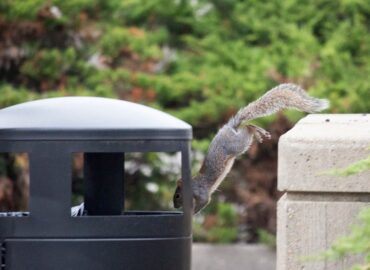Carpenter ants (Camponotus spp) are the largest insect predators that dwell in the forested part of the world. They are always in groups, and the group outweighs cougars, wolves, bears, in weight.
They mostly live in trees, build their nests, creating smooth tunnels and galleries in the wood, and foraging for food, however, they do not eat the wood like termites.
Carpenter ants are one of the most notable insect pests found in the coastal temperate rainforest.
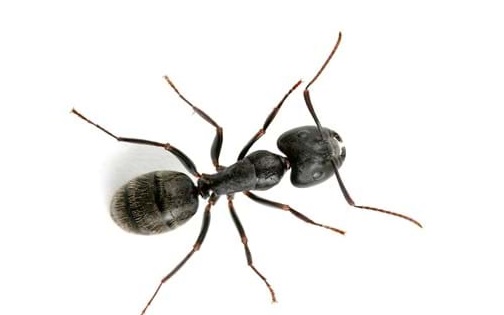
Carpenter ant workers are relentless in their efforts to create nests or forage for food. They can be found wandering over your floorboards or driveway, over overhead power lines, creeping up the side of your home, and foraging in the yard.
Carpenter ants are the kind of ants that can chew their way through the wood structure of your home.
It’s worth noting that the reason why carpenter ants do not eat wood as the termites do because they can’t digest cellulose; instead, they prefer dead insects, honeydew from aphids, plant secretions, and even rotting fruit.
How to identify carpenter ants
These species are commonly found in Vancouver due to the wet climate. Although, there are ten (10) species that are peculiar to Vancouver.

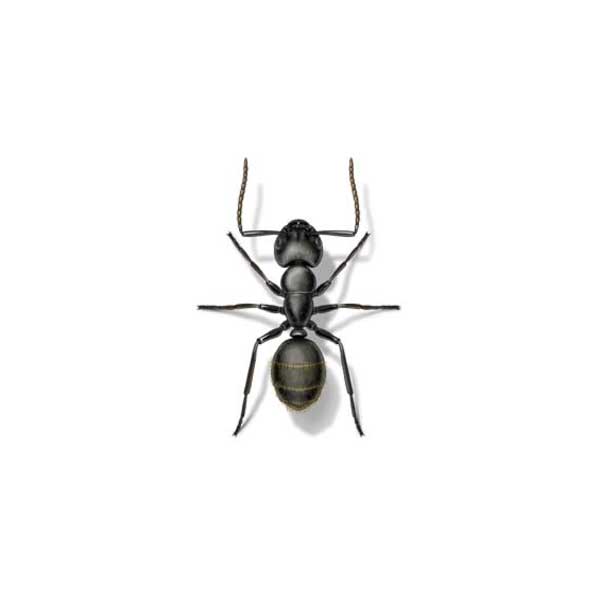
And they might be slightly similar in feeding, physical characteristics, nesting habits, and destructive behaviour which makes it hard to identify them specifically.
Identifying a carpenter ant is not soo easy, but they are very peculiar and there are easy ways to identify them; by their color, size, waist size, antenna and thorax.
- Their color is almost undeniable. They are mostly black, and the workers can be red and black or orange and black. Although, just noticing the color does not guarantee identification, but a good way to start.
- Carpenter ants are relatively big, they range from ⅜ to ½ inch.
- The waist of a carpenter ant is usually small, and the antenna is slightly bent.
- Carpenter ants thorax are rounded in structure. The thorax refers to the rounded segment after the head.
How does your home get infested by carpenter ants?
Although, these species are known to invade wet and damp woods. Carpenter ants may begin excavating tunnels through dry, undamaged wood after initially invading wet, decayed wood.
They usually enter buildings through gaps around doors and walls, as well as plumbing and electrical penetrations.
They can also crawl over overhead cables, shrubs, or tree branches that are above ground and hit the wall, then reach the home through some small window.
What is the sign of carpenter ant infestation?
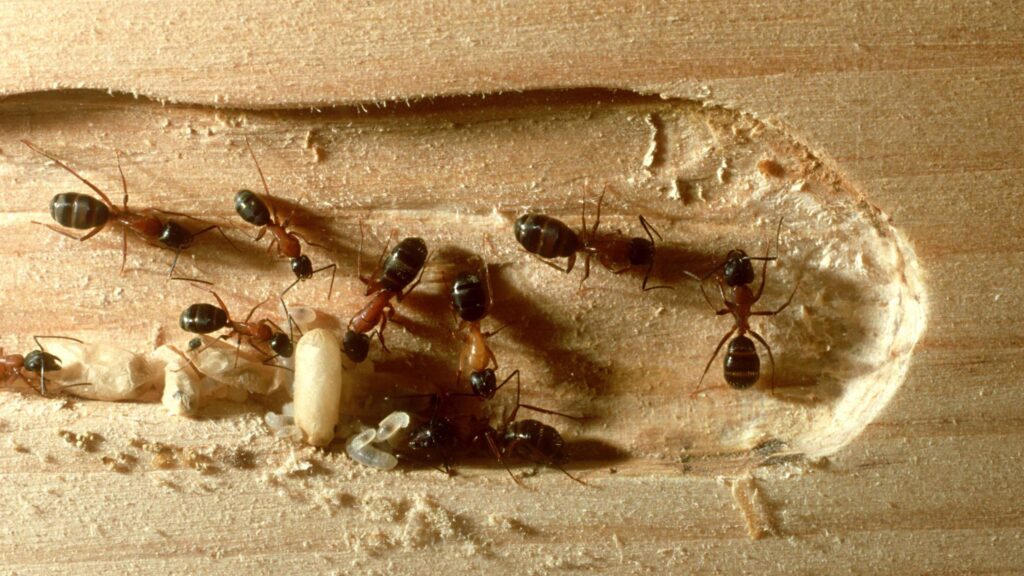
The presence of tiny, circular galleries on the surface of the wood is one sign of carpenter ant impact. Carpenter ants will dig up sawdust-like particles around and under the escape holes. The interiors of the galleries would be smooth and free of clutter.
It is, however, difficult in recognizing and finding carpenter ants because their nests are normally located in the external walls of a building, leaving little evidence on the interior of a house.
It is often preferable to have a professional eye inspect for carpenter ants. If you find just one of them in your home, be sure within yourself that there is more, make the necessary arrangement to rid your home from it.
What kind of place are favourable for carpenter ant growth
Like Vancouver, carpenter ants are more common in places with wet climate conditions. They appear around April and October, and maybe around late January. They nest in both wet and dry wood but prefer moist wood.
Nonetheless, reproductive ants emerge and swarm as a result of environmental factors. And they mate during these swarms (nuptial flights), which can last days or weeks.
The males die after the nuptial flight, and the females begin looking for a nesting spot. However, with an unfavourable environmental condition, the larvae instead grow, populate, and become adult workers in a few weeks.
And these adult workers produce more nests, build their homes, and produce food for their queen. So they require a favourable condition for them to dwell in and reproduce.
Are carpenter ants dangerous?
Carpenter ants are not generally regarded as dangerous insects. They don’t always bite. The main problem with a carpenter ant infestation is its potentiality to destroy and degrade the structural integrity of your house.
They can however become a pest when they invade your home.
What does a carpenter ant look like
A carpenter ant is peculiar and has several species. In bodily appearance, they have six legs with an evenly rounded thorax and a single, oval segmented body that is connected to their abdomen. And they do have an antenna too.
The colour of a carpenter ant ranges from reddish-brown to dull brown and can have a mix of yellow, red, or orange colour.
Carpenter ants are one of the largest insects in the world. Generally, ranges between 6 to 12mm. They have polymorphic workers, that is, they may vary in size, in a single colony.
Male, or reproductive males, can grow to be 18 mm long, while queens can grow to be 20 mm long.
Types of carpenter ants
There are 10 species of carpenter ant common to Vancouver. They are distinct in size and color because they have different types of ants.
There is the queen, the male swimmers, and the adult workers They are distinct but have similar traits and attributes. They are found in groups and cause potential harm to the wooden structures in your home and workplace.
Carpenter ant nests
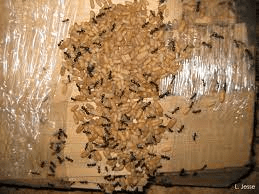
Carpenter ants derive their nest formation, in which they excavate the wood and form smooth tunnels within it.
These ants construct their nests outdoors in a range of different sources, such as tree stumps, rotting fence posts, old firewood, under stones, and so on. The parent colony, also known as the main colony, is usually found outside and contains the queen, eggs, and young.
How to control carpenter ant naturally
To control carpenter ants in your home naturally, you can follow this step. It’s easy and can be naturally discharged.
Find the bait and lure them into a nest. They are attracted to sweets or jelly, which you can mix with baking soda. Sugar or sweet can attract them, and soda can kill them.
You can eliminate their scents or trail with tea tree, orange, lemon, cedarwood. You use cotton buds to achieve this.
Once you find their nets through your bait, you can control them with boric acid. This might have to be done repeatedly to achieve the best result.
Should you get professional help to control carpenter ants?
Of course! With immediate effect. You are aware of the irrevocable damage that these pests can bring to your home. Do well to seek professional help to control these ants immediately they are sighted or suspected.
Professional Carpenter ant control service near you Vancouver Call Now




